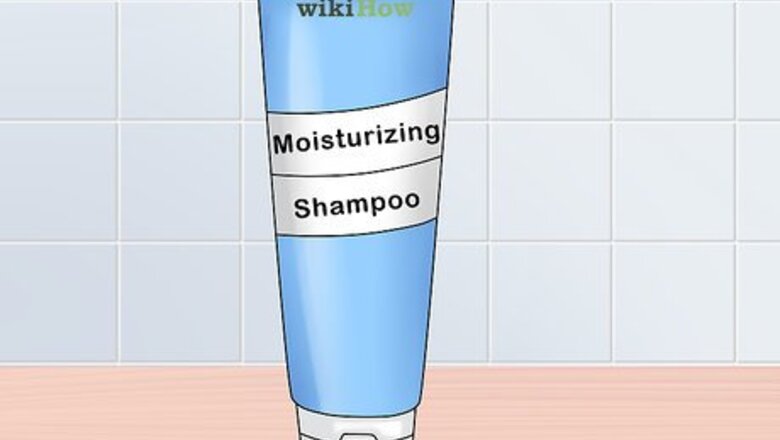
views
Use moisturizing shampoo 2–3 times a week and follow with conditioner. Do not apply conditioner to your scalp as it’s only meant to moisturize hair. Professional hair stylist Bianca Cox recommends using “a serum regularly on your scalp to hydrate it if it’s dry due to the season or a dry breakout.”
Choosing and Using the Right Products
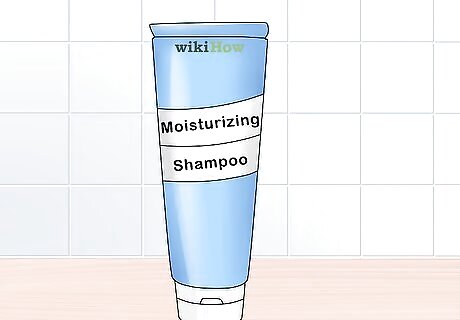
Choose a moisturizing shampoo. You don’t want a harsh shampoo that strips oils from your hair and skin. Choose one formulated to moisturize your scalp and hair, such as a formula that includes hyaluronic acid or argan or tea tree oil.
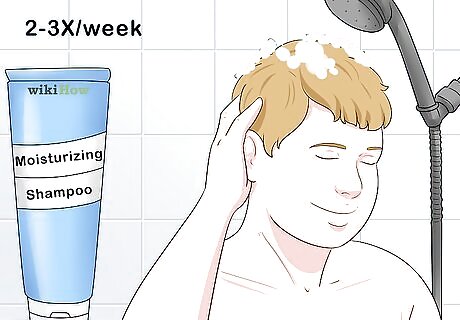
Shampoo your hair only twice or three times per week. Shampooing your hair too often can strip the oil from your scalp and leave your skin and hair dry. If you like to shower or bathe every day, simply cover your hair with a shower cap to keep it dry, or rinse your hair with water and apply a conditioner to keep it moisturized. If you work out frequently, you should rinse and condition your hair at least every other day. Dried sweat can create an odor and irritate your skin and scalp.
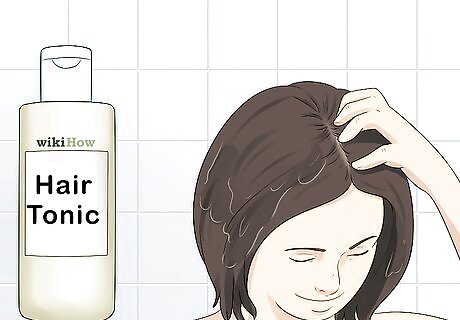
Apply a tonic after shampooing. Choose a hair tonic or toner with ingredients like glycerin and aloe, which can calm and soothe your scalp. After shampooing, apply the tonic directly to the problem areas of your scalp. The tonic will seep deep into your skin to provide lasting relief from itchiness.
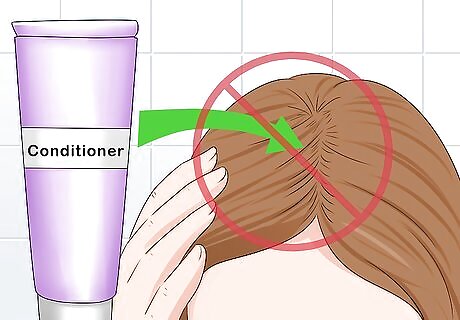
Avoid putting conditioner on your roots and scalp. Conditioner is formulated to moisturize hair, not skin. If you apply it to your scalp, it can clog your pores and lead to buildup and itchiness. Only condition your hair from the mid-lengths to the ends.
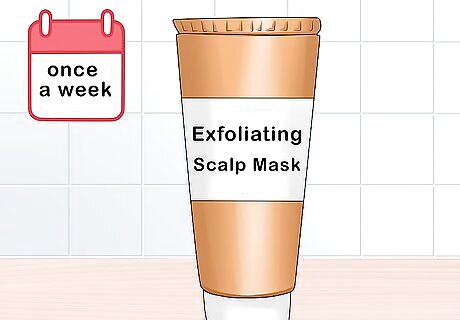
Use an exfoliating scalp mask once a week. An exfoliating mask can remove product and oil buildup, as well as dead skin, from your scalp. Use it once per week to keep your scalp skin healthy.
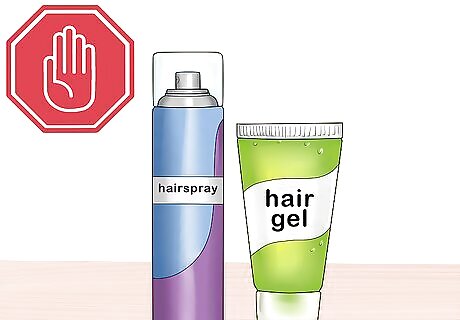
Limit the amount of products you use. Harsh chemicals in hairspray, gel, mousse, and dry shampoo can dry out your scalp. Try to limit the amount of products you use on your hair, and if possible, pick products made from natural ingredients.
Applying Oil to Your Scalp

Choose an oil to apply. You can choose from many kinds of oils, including coconut, olive, castor, almond, jojoba, argan, tea tree, eucalyptus, lavender, or peppermint oil. If you choose an essential oil you can even mix it with a carrier oil to dilute it, such as adding several drops of tea tree oil to a few tablespoons of almond or castor oil.
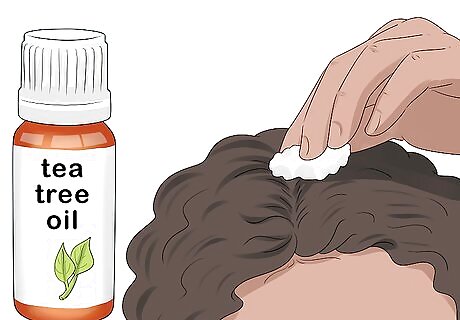
Dab the oil on your scalp. You can use your fingers or a cotton ball to apply the oil to your scalp. You can coat your entire scalp or simply concentrate on the itchiest or driest areas. The oil is good for your hair, too, so you can coat your strands with the oil, if desired.
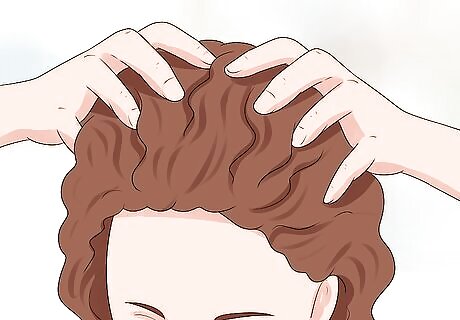
Massage the oil into your scalp. Use your fingers to gently massage the oil into your scalp using circular motions. Spend a few minutes massaging the oil in so that it penetrates the top layer of your skin.
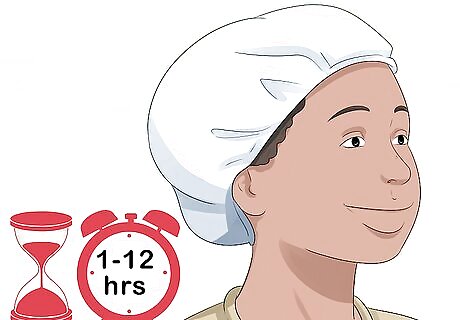
Leave the oil on for one to twelve hours. If you have a very dry scalp, consider leaving the oil on overnight. Simply cover your hair with a shower cap or scarf if you are worried about getting the oil on your pillowcase. Shampoo your hair and scalp with a mild or moisturizing shampoo to remove the oil after letting it soak. If you applied the oil to your hair, simply rinse out the shampoo and oil. If you didn’t put the oil in your hair, massage a conditioner from the mid-lengths to the ends of the strands.

Repeat the treatment two to three times a week depending on the dryness of your scalp. Avoid using this treatment more than three times per week, or your hair may become greasy.
Preventing Dry Scalp
Give yourself a scalp massage every week to prevent flakiness. A weekly scalp massage will help remove dead skin cells, preventing flaky scalp and other conditions like dandruff and psoriasis. Start at the front of your scalp and work towards the back, gently kneading and lifting the scalp with a firm, consistent pressure. Use a circular motion to massage. Keep your hands in an L-shape and be very gentle around your hairline, increasing your pressure as you work towards the crown. Massage for about 5-10 minutes at a time, breathing deeply to increase blood flow. You can use an oil if you have one available. A scalp massage also promotes blood flow to your scalp, helping your hair grow in strong and healthy.
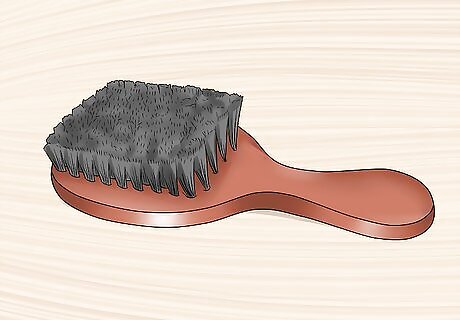
Use a boar-bristle hairbrush. A boar-bristle brush distributes oil from your scalp through the strands of your hair. It is also designed to lift dirt from your hair and will gently untangle any knots.
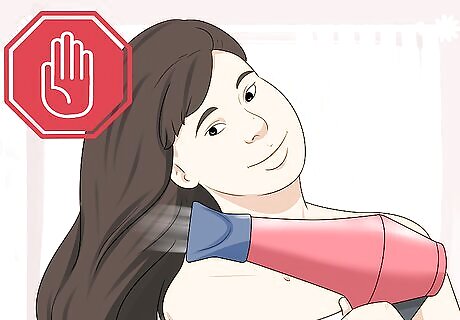
Limit the amount of heat you apply to your scalp and hair. Blow drying and heat-styling tools can zap the moisture from your hair and scalp. Rather than blow drying, straightening, or curling your hair frequently, try styles that don’t require heat, such as braids, chignons, or buns. If you do decide to use heat styling tools, be sure to apply a heat-protectant product to your hair first. This won’t impact your scalp, but it will keep your hair healthy overall.

Protect your hair and scalp from the elements. Sun, wind, and chlorine or salt water can dry out your hair and scalp. Wear a hat or scarf over your hair if you plan to be outside for a long period of time. Before swimming, coat your hair with conditioner, then cover it with a swim cap. After swimming, simply rinse out the conditioner in the shower.
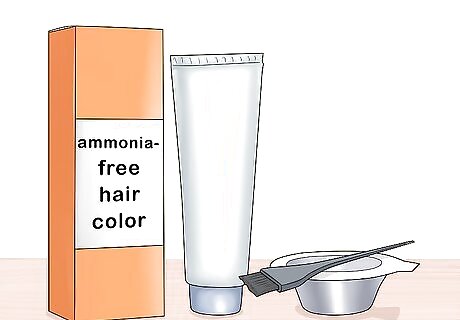
Choose ammonia-free hair color. Dyeing your hair can dry it out and irritate your scalp, leading to itchiness. If you aren’t ready to give up coloring your hair, ask your stylist about using an ammonia-free color, which is less damaging and drying.
Moisturizing from the Inside

Stay hydrated. Drinking enough water each day can really help to moisturize your scalp. Men should drink about 13 cups (3.1 L) of water each day, while women should drink about 9 cups (2.1 L) of water per day. If it is very hot or if you exercise frequently, increase the amount of water you consume.
Work out regularly. Getting exercise helps to increase healthy blood flow to your scalp and distribute the natural oils your scalp produces. Remember to rinse and condition your hair at least every other day when you exercise to avoid irritating your scalp with dried sweat.
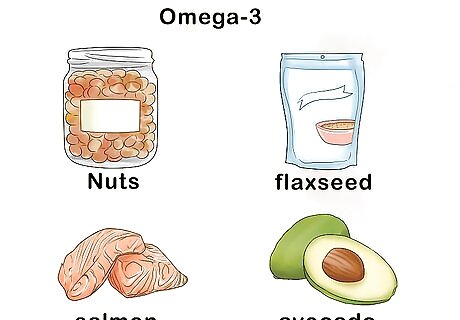
Consume foods with Omega-3s. Omega-3 fatty acids are great for your hair and skin. Choose foods like nuts, avocados, flaxseeds, and salmon, or take a daily supplement, to ensure you are getting enough Omega-3 fatty acids in your diet. Speak to your doctor before beginning an Omega-3 supplement regimen.
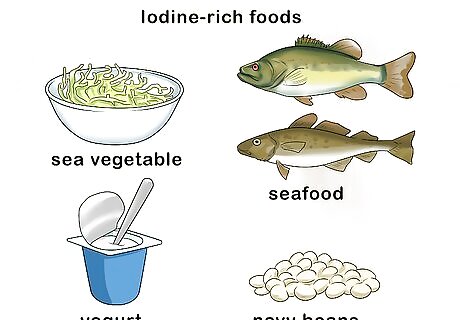
Choose iodine-rich foods. Iodine supports scalp healing and hair growth. It can be found in sea vegetables (like kelp) and seafood (like cod and bass), as well as navy beans, potatoes, yogurt, cranberries, and strawberries. Talk to your doctor before taking iodine supplements to avoid consuming too much, which can lead to iodine poisoning.

Boost your B-vitamin intake. B vitamins, like B6 and B12, help to moisturize your scalp. You can find these vitamins in foods like walnuts, flaxseeds, soba noodles, barley, avocado, chickpeas, kidney beans, raspberries, beets, and mussels, in addition to whole-grain breads and cereals.


















Comments
0 comment